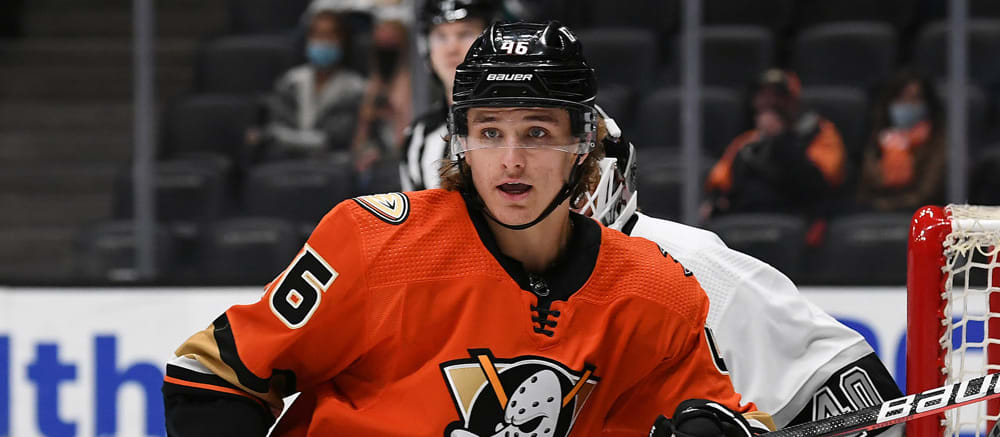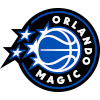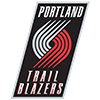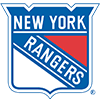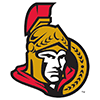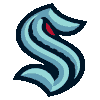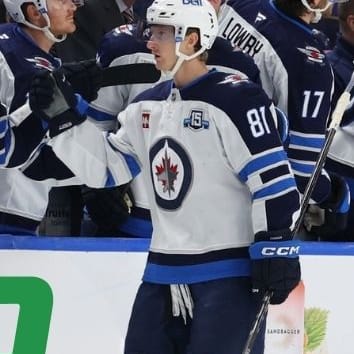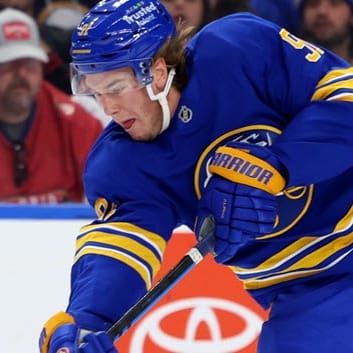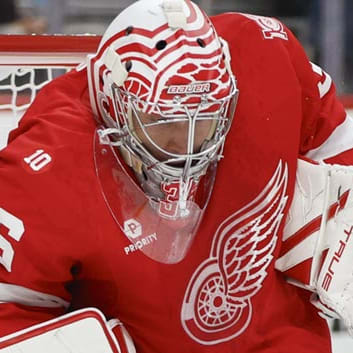Constructing this year's top prospect list was considerably more difficult than ever before. Every player on this list played a limited season in 2020-21 due to the COVID-19 pandemic, and some of the kids listed didn't play at all a year ago. As a result, I expect a ton of movement to this list moving forward as we get a better read on the future potential of certain guys as they get more games under their respective belts.
The top three players listed below were in consideration for the No. 1 spot. I see very little separation between the trio and believe all three have a legitimate claim to the title of top prospect in the NHL entering the season.
(Note: Players with 25 games or more of regular season NHL experience are not eligible)
1- Quinton Byfield (C, LAK): I felt each of the top three players on this list had a legitimate claim to the No. 1 spot, but ultimately went with Byfield, due to his youth, upside and the fact he's a lock to remain at center. With the OHL season postponed and eventually cancelled, Byfield spent the entire year in the AHL and performed well (8 goals, 20 points in 32 games) for a kid who played the entire year at age 18. Byfield is built like a linebacker on skates. He's 6-foot-4, well over 220 pounds, and moves like a player half his size. He's an exceptional skater with the ability to dominate a game
Constructing this year's top prospect list was considerably more difficult than ever before. Every player on this list played a limited season in 2020-21 due to the COVID-19 pandemic, and some of the kids listed didn't play at all a year ago. As a result, I expect a ton of movement to this list moving forward as we get a better read on the future potential of certain guys as they get more games under their respective belts.
The top three players listed below were in consideration for the No. 1 spot. I see very little separation between the trio and believe all three have a legitimate claim to the title of top prospect in the NHL entering the season.
(Note: Players with 25 games or more of regular season NHL experience are not eligible)
1- Quinton Byfield (C, LAK): I felt each of the top three players on this list had a legitimate claim to the No. 1 spot, but ultimately went with Byfield, due to his youth, upside and the fact he's a lock to remain at center. With the OHL season postponed and eventually cancelled, Byfield spent the entire year in the AHL and performed well (8 goals, 20 points in 32 games) for a kid who played the entire year at age 18. Byfield is built like a linebacker on skates. He's 6-foot-4, well over 220 pounds, and moves like a player half his size. He's an exceptional skater with the ability to dominate a game with both size and skill. It's an all-around package you rarely, rarely come across. Byfield might have a lower floor than some of the players listed below but there's isn't a guy on this list who can come remotely close to touching his potential long-term upside.
2- Trevor Zegras (C, ANA): Zegras should be a full-time member of the Anaheim roster this coming season, at which point I truly believe he will immediately become one of the five most talented playmakers in the entire league. Zegras has eyes in the back of his head. He knows where his teammates are at all times and can make even the most difficult passes appear routine. His shot has long been underrated, but he's considerably smaller and doesn't move anywhere near as well as Byfield does. I also like him better on the wing but acknowledge Anaheim should continue to develop him as a center due to the massive value of the position. Zegras project as an easy top-six forward who should quickly establish himself as one of the NHL's most dominant power-play options.
3- Cole Caufield (RW, MTL): With every passing year it becomes more and more mind blowing that 14 teams passed on Caufield in the 2019 NHL Draft. Caufield is severely undersized (5-foot-7) and nothing better than an average skater, but the most difficult thing to do in this sport is score goals and Caufield is one of the very best in the world at it. His shot is extremely accurate and Caufield has that rare ability to pick corners from almost any spot. He can score off set pieces in the offensive zone and works to get open when he doesn't have the puck. I would feel better about Caufield's projection if you guaranteed me he was going to lineup alongside a talented, playmaking center, but I firmly believe he is going to pot 25-plus goals every year for well over a decade for Montreal, beginning this coming season.
4- Cole Perfetti (LW, WPG): You can be a high-end player in today's NHL with a mediocre set of wheels as long as you think the game well. Perfetti certainly does that. His creativity with the puck is excellent. I'm especially impressed with how good Perfetti is at assessing his options on the ice. His head is always up and he almost always makes the right decision with the puck on his stick. Like Byfield, Perfetti spent last season in the AHL due to the OHL not playing and the results (9 goals, 26 points in 32 games) were fantastic for a kid who played the entire year against men at age 19. Winnipeg has gotten real lucky in the draft the past couple years as some top-flight talents have fallen to them and Perfetti is the ultimate example of that.
5- Owen Power (D, BUF): It's exceedingly rare that a player drafted No. 1 overall the prior year, as Power was, isn't in the top spot on this list. I would be flabbergasted if Power doesn't develop into a two-way horse who logs 25 minutes per game on a yearly basis, but there are still questions regarding how much offense he will provide at the next level. Power's puck skills are fine, but I don't think he's dynamic. He passes very well and does a nice job of jumping into the rush to supplement his forwards. He has also played a ton of high-level hockey for such a young kid. He already has a full season at the University of Michigan under his belt, in addition to a stellar effort for Canada at the World Championship. There are no noticeable weaknesses in his game. He's arguably the most important cog to a Buffalo team that is in the midst of a full-blown rebuild. Power is headed back to Michigan for his sophomore season but I imagine he will be in the Sabres lineup as soon as the Wolverines' year ends.
6- William Eklund (LW, SJ): The Sharks' prospect pool as been steadily improving the past couple years, but Eklund, selected No. 7 overall this past July, is by far the most talented and most import piece of San Jose's unofficial "rebuild." I had Eklund as the No. 2 player on my board, not all that far behind Power. I was extremely impressed with his SHL production (11 goals, 23 points in 40 games) at such a young age and felt he was the most talented offensive player in the entire draft. Eklund's ability to make plays at a high rate of speed is extremely impressive and his effort level is exceptional. In short, I have a difficult time envisioning a scenario in which Eklund doesn't develop into a productive NHL player. Eklund is literally the most valuable asset the Sharks have right now.
7- Alex Newhook (C, COL): Newhook began last season at Boston College and found himself in the Avalanche lineup by the time the year ended. He's an excellent skater with the ability to blow past opposing defenders. He'll go to the difficult areas of the ice to make a play and is equally adept at both finishing and setting up his teammates. I also like his fit on a loaded Colorado team. Newhook should play a depth role early in his NHL career, while also getting some power-play time. He doesn't project to have the immediate impact Zegras and Caufield will bring to the table next season, but his long-term ceiling is just about as high. There is too much here in terms of skill and smarts for Newhook to not develop into a quality player.
8- Anton Lundell (C, FLA): Like Caufield, how Lundell dropped to No. 12 overall in 2020 is one of the world's great mysteries and I imagine it's a question we'll be asking more frequently in the coming years. Simply put, Lundell has produced like a top-line center everywhere he's played. Lundell averaged nearly a point-per-game last season (16 goals, 25 points in 26 games) for his club team, HIFK, in Liiga, was dominant for Finland at the World Juniors (10 points in 7 games), and then put forth a stellar showing (7 points in 10 games) at the World Championship. In a league where productive center's are the most difficult commodity to find, Lundell is a two-way horse. He can put up points, play physically, and log significant minutes in any type of situation. I expect him to be a significant contributor for the Panthers, beginning this season.
9- Moritz Seider (D, DET): Eyebrows were raised around the hockey world, but Detroit GM Steve Yzerman clearly knew what he was doing by selecting Seider No. 6 overall back in 2019. Like Power, Seider is the sum of his parts. I've always liked Seider's offensive game a bit more than most, but that is an area in which he has unquestionably improved the past couple seasons. He may never be a big-time point producer, but Seider is certainly capable of chipping in some secondary scoring. In short, I really don't see any area in which he significantly struggles. Seider should be a real minute-eater for the Red Wings and the fact he has already played a ton of hockey in his native Germany, Sweden and the AHL, only serves to enhance his outlook. I would be absolutely floored if Seider didn't give the Detroit well over a decade of mid-pairing, two-way production.
10- Matthew Boldy (LW, MIN): Boldy was always going to be a good NHL player, but his performance this past season has me more convinced than ever he will be a true top-flight player for Minnesota, giving them another stud to pair alongside reigning Calder Trophy winner Kirill Kaprizov. Boldy dominated in his sophomore season at Boston College (11 goals, 31 points in 22 games), helped Team USA win a gold medal at the World Juniors, and then finished the year by posting six goals and 18 points in 14 AHL games. The sample size is small, but I am extremely pleased to see Boldy's success upon immediately signing his entry-level deal. The concern was that his skating would hold him back, but he does so many other things well I don't think it will be an issue. Boldy is 6-foot-2 and should play at well over 200 pounds down the line and when you combine that type of size with excellent hands and good vision, you have a potential stud on your hands.
11- Kent Johnson (C, CBJ): Arguably the most individually skilled player available in this past July's draft, Johnson has the rare ability to beat opposing defenders one on one and make something out of nothing in the offensive zone. Johnson averaged more than a point-per-game (nine goals, 27 points in 26 games) in his freshman season at Michigan and is just a year removed from being named BCHL MVP after posting 41 goals and 101 points in 52 games. Johnson needs to bulk up considerably and learn how to maintain his elusiveness against bigger, stronger defenders, but there is true top-line offensive upside here and Johnson was a great get for the Blue Jackets at No. 5 overall this past July.
12- Lucas Raymond (LW, DET): Raymond's calling card is his puck skills. He possesses that rare ability to do anything he wants in the offensive zone, in addition to having an outstanding shot. Quite honestly, he didn't perform up to my expectations for Frolunda of the SHL last season (6 goals, 18 points in 34 games), but he'll play virtually this entire season at age 19 and his ceiling remains exceptionally high. Detroit's prospect pool is fairly deep, but light in terms of potential high-end forwards. Raymond is by far their best option in that area, and I remain confident he will put it all together, although it may take longer than I initially anticipated. He should get a long look in training camp before ultimately starting this upcoming season in the AHL.
13- Brandt Clarke (D, LAK): Clarke is one of the more unique evaluations I can remember in recent memory. He's an elite, high-end offensive defenseman. It's easy to see him running an NHL power-play. That's the good news. The bad news is that Clarke features an extremely awkward skating stride that no coach would ever teach a young player. He's defended well at the junior level, but it's fair to wonder if that's simply because he's more talented than most everyone else on the rink. I could see him becoming considerably less effective when having to contend with the pace of the NHL game. I could also see his elite skill and supreme confidence with the puck making him one of the NHL's best offensive defenders. There's clear risk here, but the reward is high.
14- Luke Hughes (D, NJD): Quinn and Jack's baby brother is all about future projection. He will show flashes of brilliance now, but just flashes. Luke is an elite skater who possess the foot speed to control play in all three zones. There is so much value in having a defenseman who can skate his way out of trouble if circumstances dictate. Luke has more offensive ability than he gets credit for, but he's nowhere near as dynamic as Quinn was at the same age. Still, it's easy to see why a 6-foot-2 defenseman who would have eligible for the 2022 draft had he been born just a week later is in such high demand. Hughes uses his feet to defend and has the frame to add an added dimension of physicality to his game down the line. His ceiling is about as high as any player in the draft and there is a definite scenario in which Hughes could easily emerge as the best player selected this year. Hughes, who missed the end of the season, with a foot injury, is off to the University of Michigan.
15- Spencer Knight (G, FLA): Knight stepped right off the Boston College campus and into the Panthers lineup late last season and performed well. He even got into a couple playoff games for Florida, going 1-1 with a 2.07 GAA and .933 save percentage. Knight is 6-foot-3 with excellent technical skills. He rarely gets caught out of position and lets the game come to him. I'm a big, big fan and see no reason Knight can't develop into an upper-tier NHL starting goaltender sooner rather than later. I'm also 1,000 percent confident that Knight is better than Sergei Bobrovsky, the man he is expected to share time with for the Panthers this coming season, but Bobrovsky has five years left on his contract with a cap hit of $10 million per season. and it's naïve to think that won't have any impact on the battle for playing time.
16- Peyton Krebs (C, VGK): Vegas has been hesitant to move Krebs in any deal, which is understandable given the fact he's good, on an entry-level contract, and NHL ready. Krebs made a mockery of the WHL a season ago (43 points in 24 games), in addition to posting four points in five AHL contests and one assist in four games with Vegas. Krebs has excellent vision and works to get the puck back when he doesn't have it. I have zero doubt he could help the Golden Knights this coming season, but I doubt they have room for him in their top-nine and Krebs shouldn't be playing limited minutes at this stage of his career. I wouldn't be the least bit surprised if he forces his way into the Vegas lineup before the 2021-22 campaign concludes.
17- Bowen Byram (D, COL): Byram was sheltered in his 19 games with Colorado a season ago, managing just two assists, but his dominance was on full display at the World Juniors and it's easy to envision him as a top-pairing defender for many years to come. Byram skates about as well as any defensive prospect in the league. He can blow past opposing forwards and use his shiftiness to make plays in the offensive zone. And while he might not have high-end puck skills, he gets more than his fair share of scoring opportunities because of how well he moves. Byram's stock has held steady since being drafted No. 4 overall in 2019, and I expect him to be a middle-pairing defenseman for the Avalanche this coming season, with the potential for much more down the road.
18- Jamie Drysdale (D, ANA): Drysdale played 24 games for the Ducks a season ago (3 goals, 8 points), which means he should graduate from this list on opening night. Anaheim was a terrible team last year and thus I saw no reason to rush Drysdale to the NHL, but he more than held his own on a rebuilding club. Drysdale skates extremely well and plays an simplistic, but effective offensive game. His reads are strong and his first pass on point. I don't think he will ever be a major, major point producer, but his hockey IQ and quickness allows him to make plays in all three zones. Drysdale is a good player and one who should be an NHL regular this coming season as a 19-year-old.
19- Matt Beniers (C, SEA): Seattle spent their first ever draft pick (No. 2 overall) on Beniers, which was the most widely expected outcome from the very start. I personally would have gone in a different direction -- Beniers was No. 6 on my board -- but he had a strong World Juniors and averaged a point-per-game (10 goals, 24 points in 24 games) as an 18-year-old freshman at the University of Michigan. My biggest concern here is that Beniers' greatest attribute is his work ethic. He plays every shift as if it's his last, and while that clearly translates in a positive way on the ice, I still feel he is best served as a secondary offensive option. Beniers is definitely staying at center and there's value in that as well, but I think he's a player with an exceptionally high floor as opposed to one with a very high ceiling. Like Power, he, too, is scheduled to return to Michigan and could be in the NHL by the time the upcoming season ends.
20- Dylan Guenther (RW, ARI): Trying to find a flaw in Guenther's game is difficult, which makes the fact he ended up on an Arizona team which was scheduled to not have a first round pick in the 2021 draft all the more impressive. He has size (6-foot-2), decent speed, and skill. When he and his team doesn't have the puck, he works to get it back. Guenther can control a game from the side wall on the power-play or drive to the net and create havoc. He'll score plenty of ugly goals over the course of his career in addition to countless pretty ones. I've been impressed with Guenther's ability to manipulate his body off the rush. He knows when to speed up and slow down and when and where to cut. I feel considerably better about Guenther's projection moving forward than most players in this draft. The fact he's played a standout role for one of the WHL's best teams only helps matters.
21- Yaroslav Askarov (G, NSH): I probably should have ranked Askarov and Knight right next to each other because I see no real difference in terms of their current of potential future value. Both are well positioned to be top-flight NHL goaltenders, although I like the certainty Knight provides as he's already in the NHL while Askarov remains in the KHL. Askarov makes seemingly all the saves he should and quite a few he shouldn't. He had a poor World Juniors a couple years ago when teams began ripping pucks past him glove side, but I think those concerns are overblown. Askarov is ridiculously athletic and that, combined with his competitiveness, leads to several highlight reel stops each season. I'm a big Juuse Saros guy and think the Predators will be fine for as long he remains their No. 1 goalie, but Askarov is on another level entirely.
22- Arthur Kaliyev (RW, LAK): There is absolutely nothing pretty about Kaliyev's game outside of how hard and well he shoots the puck. He is one of the few players on this list -- and in the NHL currently -- who can consistently beat goaltenders from distance. Kaliyev is so talented that the Kings can put him on their top power-play unit, tell him to fire every time he gets the puck, and get plenty of value out of him. That's the good news. The concern is that Kaliyev's game lacks pace and it's difficult to see how he's going to contribute if he isn't scoring goals. I try to avoid one-dimensional players like this because the margin for error is none, but Kayliev is that talented.
23- Nils Lundkvist (D, NYR): Lundkvist has been exceptional the past couple seasons with Lulea of the SHL, transforming himself from a prospect with a seemingly stable floor to a prospect with legitimate high-end potential. Lundkvist does everything well. His hockey sense is exceptional, he can run a power-play, and his shot has improved greatly over the years. He wins in the defensive zone with his brain as opposed to brute strength. The presence of Adam Fox and Jacob Trouba on the right side for the Rangers should allow Lundkvist to play this season in a third-pairing role alongside fellow Swede Patrik Nemeth, but I think it's only a matter of time before Lundkvist's play forces coaches to push him up the lineup.
24- Chaz Lucius (C, WPG): Scouts have seen plenty of Lucius during his time with the NTDP, but it was still disappointing that a lower-body injury cost him most of the season. He was predictably effective upon returning, posting 13 goals and 18 points in a dozen games. Chaz has come up as a center, but I'm convinced his future is on the wing. His game lacks pace at times and I think he's best suited playing the wing with a creative pivot beside him. He's got the high-end skill to dominate down low, despite playing with just a marginal amount of physicality to his game. Lucius can stickhandle in tight and possesses excellent offensive awareness. I'm a little worried Lucius isn't going to accomplish much if he isn't piling up points, but he isn't being drafted for his defensive skills. He's an easy top-six offensive talent. There's little concern here outside the lack of foot speed. Lucius is committed to the University of Minnesota.
25- Ilya Sorokin (G, NYI): Sorokin played 22 games for the Islanders in his rookie season, which makes him barely eligible for this list. The results were overwhelmingly positive (13-6-3, 2.17 GAA, 9.18 save percentage, 3 shutouts) and he even saw action in three playoff games. Sorokin's seamless transition to North American hockey shouldn't come as much of a surprise. This is a guy who was arguably the most decorated goaltender in KHL history. In 244 career games in that league, Sorokin posted a ridiculous 1.70 GAA and .930 save percentage. Sorokin is destined to split time with Semyon Varlamov for at least another year, but coach Barry Trotz has always been a guy that likes to use both his goaltenders, so Sorokin should see plenty of playing time. I have zero doubt he could serve as a high-end, full-time starter for the club immediately if given the chance.
26- Alex Turcotte (C, LAK): Turcotte has been tumbling down the rankings since being drafted No. 5 overall in 2019 and I'm fairly sure this is the lowest I've had him yet. I was quite confident Turcotte would be an NHL regular by now, but he's actually yet to make his NHL debut. He very well may have a year ago if the COVID-19 pandemic didn't limit the length of the season, but I think most everyone would agree he hasn't developed as quickly as the Kings expected. Turcotte's also been banged up, but at his best, he's a high-end two-way threat with the ability to make plays in all three zones. A good portion of Turcotte's value comes from the fact he's a no-doubt center, which is an issue considering the Kings already have Anze Kopitar on their roster, Byfield coming, and still felt the need to give Phillip Danault a long-term contract this past summer. I wouldn't be surprised if Los Angeles used Turcotte as trade bait during the coming months.
27- Simon Edvinsson (D, DET): Yzerman nailed the Seider pick as a I mentioned earlier, so I'm tempted to give him the benefit on the doubt with Edvinsson, who was taken No. 6 overall in 2021. The intrigue here is the size (6-foot-4) and all-around package. Edvinsson isn't a pure burner, but possesses the speed to push back opposing defenders and will display flashes of high-end offensive ability, although not consistently. His decision making with the puck is questionable at times, but it's more because he is trying to do too much as opposed to a true flaw in his game. I think that's correctable. I'd like to see him pick and choose his spots a bit better. He should be a useful NHL player with minimal improvements to his game, with the ceiling of a multi-time All-Star should he put it all together. I expect him to sign his entry-level contract at some point this season and compete for a roster spot with Detroit in the fall of 2022.
28- Philip Tomasino (C, NSH): Of all the OHL players who played in the AHL last season due to the former's cancellation, Tomasino was the most effective. He dominated to the tune of 13 goals and 32 points in 29 games despite playing the entire year as a 19-year-old. Tomasino has a well-rounded offensive skill set, with his skating being his greatest strength. I've always had a difficult time finding a significant weakness in his game. Tomasino's hockey sense is terrific and his puck skills are at least average, if not better. Nashville's greatest weakness as a team is a lack of scoring punch and I think it's reasonable to expect Tomasino to help in that area as soon as this season. I expect him to get a long look in training camp.
29- Connor McMichael (C, WSH): McMichael led AHL Hershey is scoring a season ago as a 20-year-old, posting 14 goals and 27 points in 33 games. He has quickly established himself as a jack-of-all-trades player who can do most anything on the ice. I openly admit I underrated his offensive capabilities in his draft year of 2019. I had McMichael pegged as a solid player, but likely not a star. Now, he has the look of a well-rounded second-liner, if not better. McMichael should also remain in the middle, giving his value a significant boost. He's the exact type of young player an aging Washington team should be trying to incorporate into their lineup.
30- Jake Sanderson (D, OTT): The Senators thought enough of Sanderson to make him the No. 5 overall pick in the 2020 draft. I didn't like it then and don't like it now, but Sanderson is a heck of a player with at least middle-pairing upside. Sanderson logged a ton of minutes for both the University of North Dakota in his freshman season and Team USA at the World Juniors a year ago. His college production was fairly strong (2 goals, 15 points in 22 games) for a player with questions regarding his offensive upside. Sanderson is an excellent athlete with the speed to push back opposing defenders. He's steady in his own zone and does a nice job of advancing the puck to teammates. I don't see Sanderson with the same long-term upside as some of the top young defenders in the game today (Cale Makar, Adam Fox, Quinn Hughes), but he might be prime Ryan McDonagh, which would make him a massive two-way value for Ottawa and well worth the high draft pick.
31- Dylan Holloway (C, EDM): Turns out I was way too low on Holloway after the Oilers took him No. 14 overall in 2020, but in my defense, very few saw this offensive breakout coming. Holloway finished his sophomore season at the University of Wisconsin with 11 goals and 35 points in 23 games. For comparison's sake, he posted eight goals and 17 points in 35 games his freshman year. Holloway's best asset is his speed. He's an excellent athlete and everything he does on the ice appears extremely fluid and under control. He gets where he is going with ease and has better hands than I initially gave him credit for. Holloway has signed his entry-level contract with Edmonton and will make his pro debut this coming fall. I'd like to see another strong campaign before I buy in completely, but there's far more ceiling here than originally believed.
32- Marco Rossi (C, MIN): Rossi didn't play at all last season, but that a distant secondary concern compared to the health issues he was suffering from. Rossi contracted COVID-19 right before training camp and dealt with significant complications. The Wild smartly sent him home to his native Austria to be around family and friends while recovering. Rossi began skating this past May and suited up for Austria in the Olympic qualifying tournament this past August. Rossi was widely viewed as one of the most NHL-ready players available in the 2020 draft, but the lost season significantly impacts his timeline. I expect Minnesota to ease him back into action, which is fine because he won't turn 20 years of age until late September. Rossi's ceiling is that of a top-line center, but I doubt he makes an impact at the NHL level until at least the 2022-23 campaign.
33- Mason McTavish (C, ANA): The late helium McTavish got throughout the draft process carried him to the No. 3 overall pick this past July. I felt it was a reach, as I had McTavish ranked No. 12 on my board, but he would have gone shortly thereafter had the Ducks not taken him. I like McTavish's battle level and willingness to drive to the net. He works hard to create havoc in tight and shoots it well enough to score from the outside, although both are accompanied by average-to-below average foot speed, depending on your point of view. He's a good player and good prospect, but I'm not convinced he's a great player and great prospect. I'd feel much more comfortable projecting McTavish in a middle-six supporting role than a featured offensive role. I acknowledge that I could have pushed McTavish up a good half dozen spots if we got to see him against his peers in the OHL a season ago.
34- Thomas Harley (D, DAL): There is a creativity to Harley's game that most defenders could only dream of. He moves very well for a 6-foot-3 kid and excels at joining the rush and creating offense. Harley's activity level is a sticking point for scouts. He is borderline dominant when he is constantly skating and making plays with his feet, but Harley gets passive at times and would rather allow the puck to do all the work. He should be an effective NHL player regardless, but the best version of Harley is an easy top-25 prospect, if not better. Harley spent last season in the AHL, finishing with eight goals and 25 points in 38 games, excellent numbers for a guy who played the entire year at age 19.
35- Alexander Holtz (RW, NJD): Holtz split the season between his SHL team in Djurgardens (7 goals, 18 points in 40 games) and New Jersey's AHL affiliate in Binghamton (1 goal, 3 points in 10 games), and while he was fine at both stops, I wouldn't say he excelled. Holtz's calling card is his shot. There are few NHL players who fire the puck as well as he does, and that leads to the ability to score from anywhere in the offensive zone. Holtz doesn't skate all that well and thus makes limited plays off the rush, so most of his offense is going to come on the power-play or off set piece in the offensive zone. Holtz's ceiling remains high, but he has some work to do to reach it.
36- Nick Robertson (LW, TOR): Robertson didn't have a very good season, although his AHL numbers (5 goals, 16 points in 21 games) were perfectly reasonable. Robertson, who played all of last year at age 19, wasn't going to crack Toronto's top-six so the club, correctly, assigned him to the minors. They also should have let him play for Team USA at the World Juniors, but that's another story. Robertson played six games with the Leafs all told, managing a single assist. I don't feel all that great about ranking Robertson this high, but I'm a big believer in his offensive game, particularly his shot and puck handling ability. I think there's a wide range of outcomes here, from a potential perennial 60-point scorer to a player who struggles to find a consistent role in the league.
37- Kirill Marchenko (LW, CBJ): Even a novice hockey fan could watch Marchenko play and see his upside. It's exceedingly difficult to find a kid who is 6-foot-3, can skate, and has excellent hands. Toss in the fact the 21-year-old Marchenko already has 75 games of experience under his belt in the second-best league in the world (KHL) and you have a potential high-end asset on your hands. There's consistently issues to work through here and Marchenko doesn't offer a ton on the defensive side of the puck, so it's imperative Marchenko generates offense. I imagine he'll figure it out. Columbus' next challenge is getting Marchenko signed and over from Russia.
38- Rodion Amirov (LW, TOR): The Leafs have been good the past several years, which typically leads to a poor prospect pool. Amirov is one of the few guys in the system who comfortably projects as a top-six forward at some point down the line. He scored nine goals in 39 KHL games last year, which is just fine considering he played the entire year at age 19. Amirov skates well and is very elusive in the offensive zone. He buries his chances and is adept at setting up teammates. The one concern, like many players on this list, is how much Amirov will contribute if he isn't piling up points. His secondary skill set in terms of physicality and defensive play isn't all that inspiring. Amirov has already signed his entry-level contract with Toronto.
39- Cam York (D, PHI): The Flyers wanted York signed on the heels of a year in which he played well (20 points in 24 games) for the University of Michigan and captained Team USA to a gold medal at the World Juniors, and the club got their wish, inking him to an entry-level deal in late March. York finished the year playing game in both Philadelphia and with their AHL affiliate in Lehigh Valley. York will be part of the ever-growing number of NHL rearguards with nothing better than average size but possessing elite hockey sense. He knows where his teammates are at all times and that awareness allows him to be an asset in the defensive zone despite not being a physical player. Philadelphia loaded up their defensive corps this offseason, making it a near certainty York begins next season in the minors, which is a good move for a kid who won't turn 21 years of age until January.
40- Jack Quinn (C, BUF): Expectations got a bit out of hand for Quinn a season ago because he was drafted higher than he should have been (No. 8 overall) by Buffalo in 2020. It was especially surprising he went higher than Rossi, his OHL teammate I touched upon earlier. Quinn is one of those players who isn't always noticeable on the ice but somehow always manages to put up points. He scored 52 goals in 62 OHL games in his draft year and has two goals and nine points in 15 games with AHL Rochester this past season before a lower-body injury required surgery and ended his year. Quinn does the little things well and thinks the game at an extremely high level, but he's going to have to find a way to consistently score in the NHL despite subpar speed. He doesn't shoot the puck as well as a guy like Caufield and isn't as creative as a guy like Zegras, so the offense is going to have to come from some combination of the two.
41- Vasili Podkolzin (RW, VAN): I'm pretty comfortable saying Podkolzin is more floor than ceiling at this point, which is fine, because I think he could really excel in a secondary role. Podkolzin plays extremely physically. He forechecks hard and will run over opposing players in all three zones. His offensive game is fine, although I don't find him to be overly creative in terms of puck skills. That, combined with average speed may limit Podkolzin to more of a depth role. That wouldn't be the end of the world because there's massive value in a player who can pot 20 goals, 40-plus points and a ton of hits, all while possessing the ability to move up in the lineup if injuries strike. I'm very interested in watching Podkolzin's transition to North American hockey this coming fall.
43- Seth Jarvis (RW, CAR): No team in the NHL has done a better job of drafting the past few years than Carolina. The Hurricanes have loaded up on highly skilled, creative forwards, and Jarvis certainly fits the bill. The No. 13 overall selection in 2020, Jarvis has excellent hands, good speed, a tireless work ethic, and the ability to play both center and wing. I've been particularly impressive with Jarvis' work away from the puck, making him an extremely well-rounded forward who should be able to contribute to the Hurricanes in a variety of roles down the line. There's a high floor here.
43- Jesper Wallstedt (G, MIN): Wallstedt was widely viewed as the top goaltender in the 2021 draft class for literally multiple years, so it was very surprising that he ended up being passed by Sebastian Cossa when all was said and done. Wallstedt ended up going No. 20 overall to Minnesota, a move that has the potential to be a steal in the not too distant future. His greatest attribute is his understanding of the game. Wallstedt's athleticism and lateral movement are about average, maybe a tick above. But he's seemingly never caught out of position and that's a trait that can make a goaltender look very, very good. The Wild had zero depth in goal, so their decision to target Wallstedt was a wise one. He figures to spend one more year in the SHL before inking his entry-level deal with Minnesota.
44- Vitali Kravtsov (RW, NYR): I personally refuse to give up on Kravtsov as a high-level prospect, although his performance since being drafted No. 9 overall in 2018 could be charitably termed as inconsistent. Kravtsov was loaned to Traktor of the KHL to begin last season and stuck with them for the duration of their year before returning to New York. He made his NHL debut in early April and played in every game for the Rangers, 20 in total, the rest of the way. Kravtsov posted just two goals and two assists, but he was used almost exclusively on the fourth line and saw no power-play time. Despite the limited role, Kravtstov looked like one of New York's better players many nights. He had consistent jump in his game and he's always been a high-level offensive player. I remain optimistic that the coaching change from David Quinn to Gerard Gallant and an increased role will unlock Kravtsov's massive potential.
45- Ivan Morozov (C, VGK): Morozov has shown more than enough throughout the early portion of his KHL career to make me believe he will be a quality NHL player immediately upon his arrival in North America, with the lone concern at this point being the timetable for when he plans to sign with Vegas. Morozov had 13 goals and 31 points in 55 games last season for SKA St. Petersburg as a 20-year-old. He has excellent hands and is a competent defensive player. The only major concern here is a lack of top-flight, breakaway speed, but I doubt that holds Morozov back considering he does most everything else well. Morozov's KHL contract reportedly expires at the end of this coming season, but SKA is a powerhouse program and they will certainly make every attempt to retain him.
46- Evan Bouchard (D, EDM): Most everyone -- I included -- assumed Bouchard would be a full-time NHL regular by now, but instead he has played just 21 games for the Oilers thus far, with 13 of those coming last season. Bouchard is a high IQ, offensive defenseman with good size at 6-foot-3, 195 pounds. I imagine he would be just fine for Edmonton this season if they handed him a second-pairing role in addition to significant time with the man advantage, but the power-play opportunities with be limited as long as both Tyson Barrie and Darnell Nurse remain healthy. I don't want to say the Oilers botched Bouchard's development because he'll play virtually this entire season at age 22, but Edmonton's current roster construction doesn't play to his strengths. Still, this should finally be the season in which he earns a full-time role with the Oilers.
47- Zac Jones (D, NYR): The play of Jones was one of the very few bright spots for the Rangers late in the year. The 2019 third-rounder (68th overall) was a key cog in helping the University of Massachusetts to the NCAA Championship. There were rumors Jones was leaning towards going back to school for a third year, but he elected to sign with New York and ended up playing in the club's final ten games. He posted four assists over that span, and as expected, looked calm and cool under pressure. Jones is an undersized defenseman (5-foot-10, 175 pounds), but his hockey sense is exceptional and his reads in all three zones strong. The Rangers would be a better team if they ran Jones out there for 82 games this coming year, but there's no room for him at the moment and he'd be much better off playing a major role for AHL Hartford as opposed to spending his rookie year in the press box.
48- Thomas Bordeleau (LW, SJ): I was higher on Bordeleau than most anyone heading into his draft year, and he rewarded that faith with a stellar first year at the University of Michigan which saw him average well over a point-per-game (30 points in 24 games) en route to winning the Tim Taylor Award as the top freshman in all college hockey. Bordeleau has, at a minimum, average skills across the board. His skating is strong and his puck skills are excellent. He's extremely creative and a real asset on the power-play. And while not tall at just 5-foot-10, Bordeleau is thick and difficult to knock off the puck. I have a real difficult time envisioning a scenario in which he doesn't develop into a solid NHL player. I could see Bordeleau being a top-30 prospect in the game at this time next year.
48- Samuel Fagemo (LW, LAK): Fagemo's stock has been steadily on the rise since being drafted No. 50 overall in 2019. He has been a consistent scorer in his native Sweden, and produced offensively (10 goals, 18 points in 32 games) during his time in the AHL a year ago. Fagemo might not pop in any one specific area, but the overall package is extremely impressive. I imagine Fagemo's versatility will endear him to the Los Angeles coaching staff in the not too distant future. He doesn't have the same ceiling as guys like Quinton Byfield and Arthur Kaliyev, but Fagemo can tailor his game and produce no matter who he is lined up with. There's a non-zero chance he plays NHL games this season.
50- Rasmus Kupari (C, LAK): To say Kupari has been up and down the past couple seasons would be a massive understatement. He has spent each of the past two seasons playing in North American, although a knee injury short circuited his debut two year ago. Kupari's stock was at an all-time low following the 2019-20 campaign, but he rebounded to post eight goals and 23 points in 32 AHL games a season ago. He also got into seven games with the Kings, scoring his first NHL goal. Kupari is shifty with the puck on his stick and weaves in and out of traffic very well. He has fallen down the pecking order as the depth in the Los Angeles system has increased, but he has easy top-six potential, if not better.


